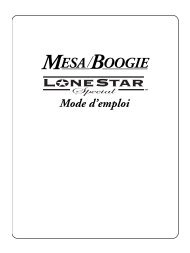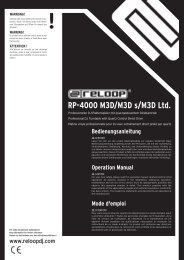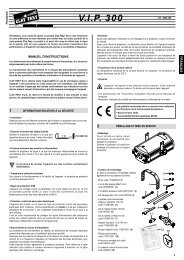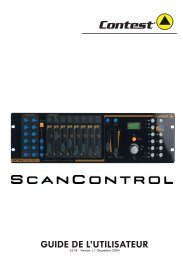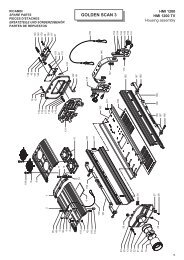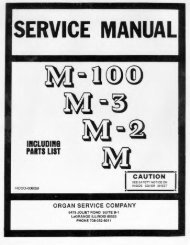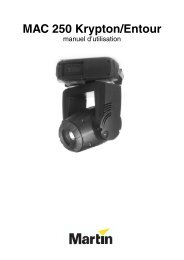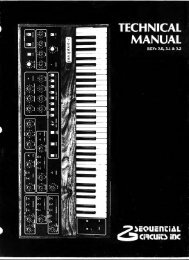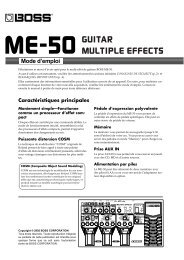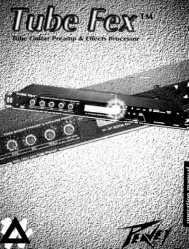Create successful ePaper yourself
Turn your PDF publications into a flip-book with our unique Google optimized e-Paper software.
300 V 3.0 <strong>Owner's</strong> <strong>Manual</strong><strong>Lexicon</strong>Random Hall Tweaks PageSPIN (Randomization)WAND (Wander)SPIN affects the movement of the reverberation tail. The object of SPIN (andWAND) is to continuously alter the timbre of the reverberant sound. This makesthe result more natural, without making the position of instruments unstable.SPIN should typically be 20 or higher. High values may make the pitch of pianoor guitar unstable.WAND sets the distance in time that the early reflections will move. For bestresults WAND should be about 10ms at larger sizes.SHAP (Shape)SHAP and SPRD work together to control the overall ambience of the reverberationcreated by the 300. SHAP determines the contour of the reverberationenvelope. With SHAP all the way down, reverberation builds explosively, anddecays quickly.As SHAP is advanced, reverberation builds up more slowly and sustains for thetime set by SPRD. With SHAP in the middle, the buildup and sustain of thereverberation envelope emulates a large concert hall (assuming that SPRD is atleast halfway up, and that SIZE is suitably large—30 meters or larger.)SPRD (Spread)DIFF (Diffusion)SPRD works together with SHAP to control the duration of the initial ambiencecreated by the 300. Low SPRD settings result in a rapid onset of reverberationat the beginning of the envelope, with little or no sustain. Higher settings spreadout both the buildup and sustain.DIFF controls the degree to which initial echo density increases over time. Highsettings of DIFF result in high initial buildup of echo density, and low settingscause low initial buildup. Echo density is also affected by SIZE; smaller spaceswill sound denser. To enhance percussion, use high settings of diffusion. Forclearer and more natural vocals, mixes, and piano music, use low or moderatesettings of diffusion.LINKWhen LINK is set, the reverb time and spread values scale linearly as the SIZEcontrol is varied. For some special effects, RTIM and SPRD can be unlinked.SHLFSHLF modifies the low-pass characteristic of the rolloff control, turning it into ashelving filter. SHLF sets the gain of an output path which is mixed with the outputof ROLL to form the main reverberant output. Both the pre-echoes and thereverberation are affected. For example, if SHLF is set to -6dB, frequenciesbelow approximately ROLL/2 will be boosted by 3.5dB; above approximatelyROLL x 2, the response will be flat.SHLF provides a method for making the spectral content of the reverberationmatch the ideal spectrum for musical acoustics in rooms. For this application,ROLL should be set between 700 and 1.5kHz, with SHLF set between 12 and-6dB.4-6



